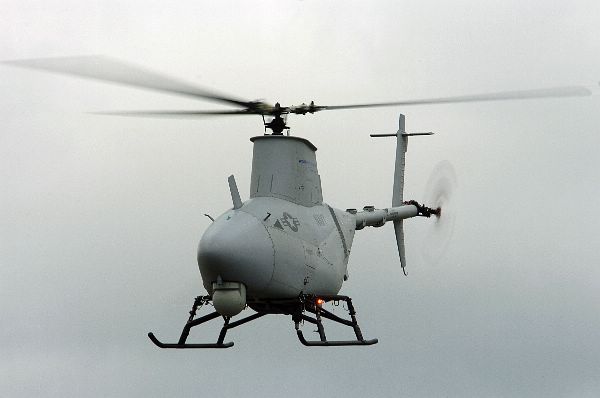The US Navy said Tuesday it grounded its fleet of unmanned MQ-8B Fire Scout helicopters after what it termed “two unrelated operational mishaps” with the aircraft.
“In light of the recent mishaps, the Navy has temporarily suspended Fire Scout flight operations for 14 air vehicles in inventory while system performance and operational procedures are reviewed,” a statement said.
In the first incident March 30 off the coast of Africa, one of the helicopters was ditched at sea upon returning from a maritime surveillance mission from the frigate USS Simpson.
“After multiple approaches and exhaustive troubleshooting by operators, the aircraft was positioned a safe distance from USS Simpson and the flight was terminated,” the statement said.
“Subsequently, Simpson crew performed a nighttime recovery of the aircraft.”
On April 6, a second helicopter crashed in northern Afghanistan during “a routine surveillance mission in support of Regional Command North.”
The cause of both incidents is under investigation, officials said, expressing confidence in the Northrop Grumman aircraft used for reconnaissance and other support services for US forces.
“Since 2006, the MQ-8B Fire Scout has accumulated over 5,000 flight hours with more than 3,000 flight hours tallied during operational deployments,” the navy statement said.
“Fire Scout has played a significant role in multiple operations including three counter-piracy actions, a search-and-seizure operation, support of successful transits of the Strait of Hormuz; completion of a special operations proof of concept; and use as an intelligence, surveillance and reconnaissance asset for Operation Odyssey Dawn in Libya.”
In Afghanistan, the Fire Scout “has provided significant support to ground commanders by enhanced situational awareness to joint forces closely engaged against enemy combatants,” it added.
The Fire Scout is seven meters (31.7 feet) long, and three meters (9.8 feet) high. It can fly at 200 kilometers per hour(110 knots) at altitudes up to 6,000 meters (20,000 feet) and has a range of 110 nautical miles.










